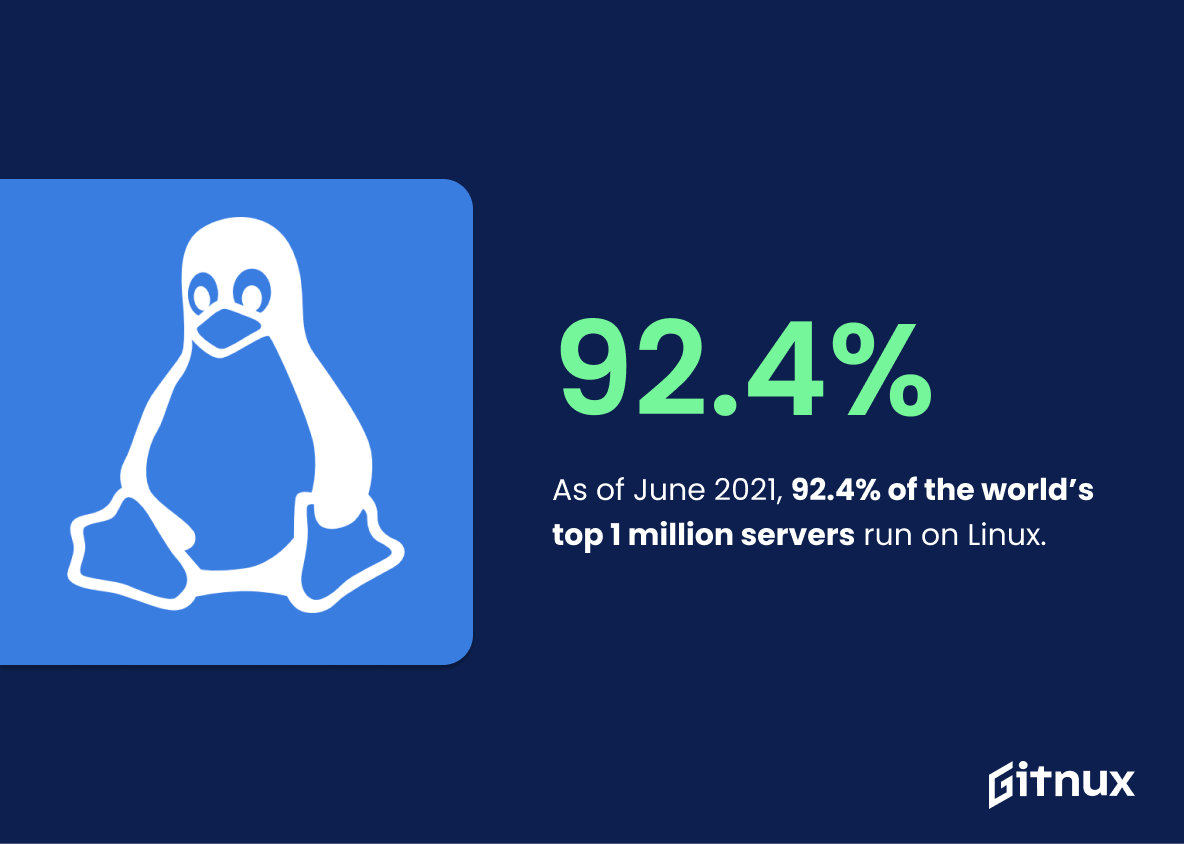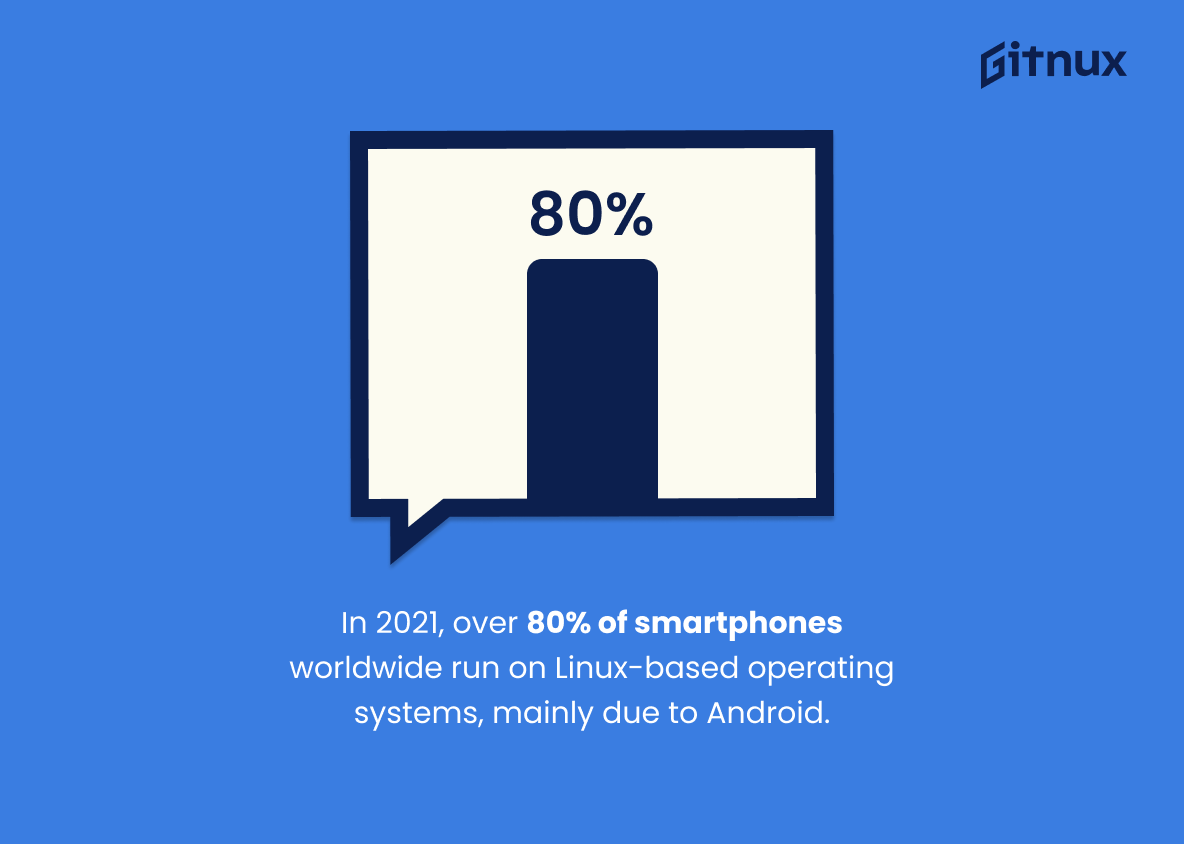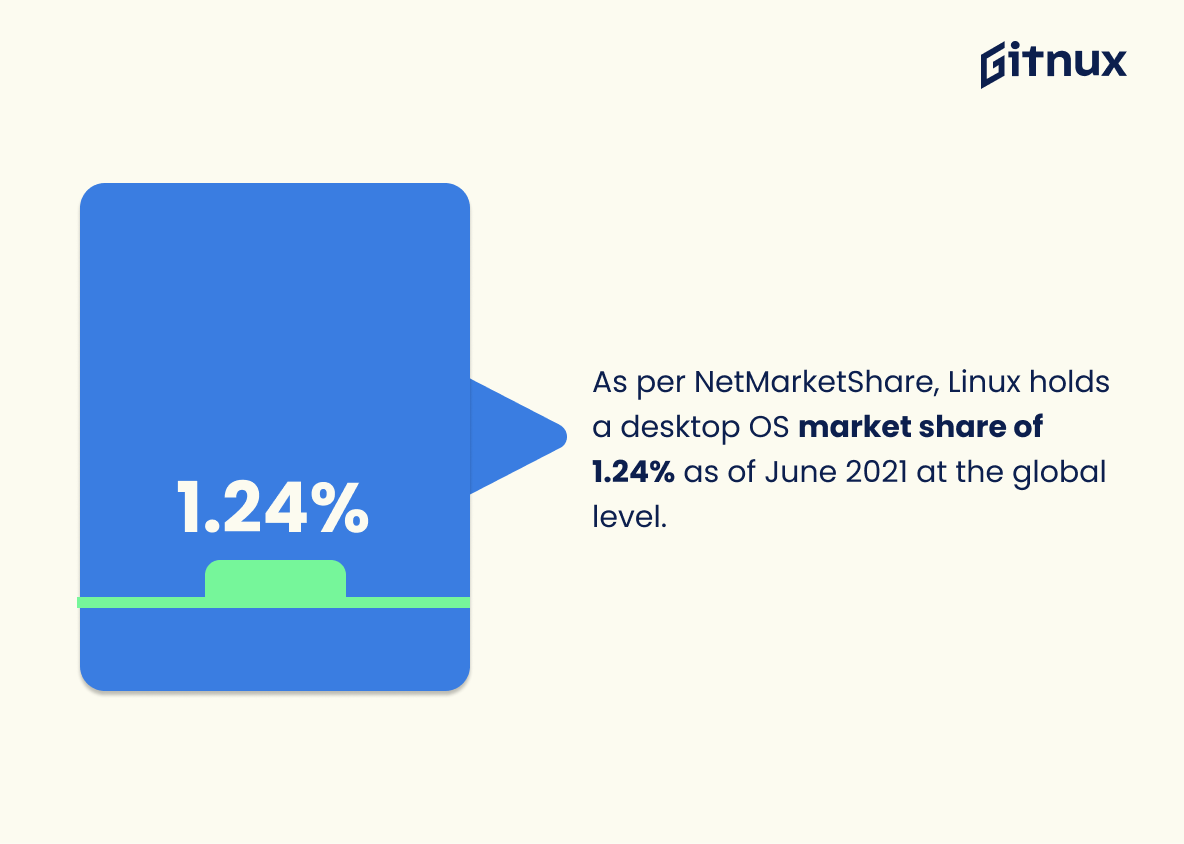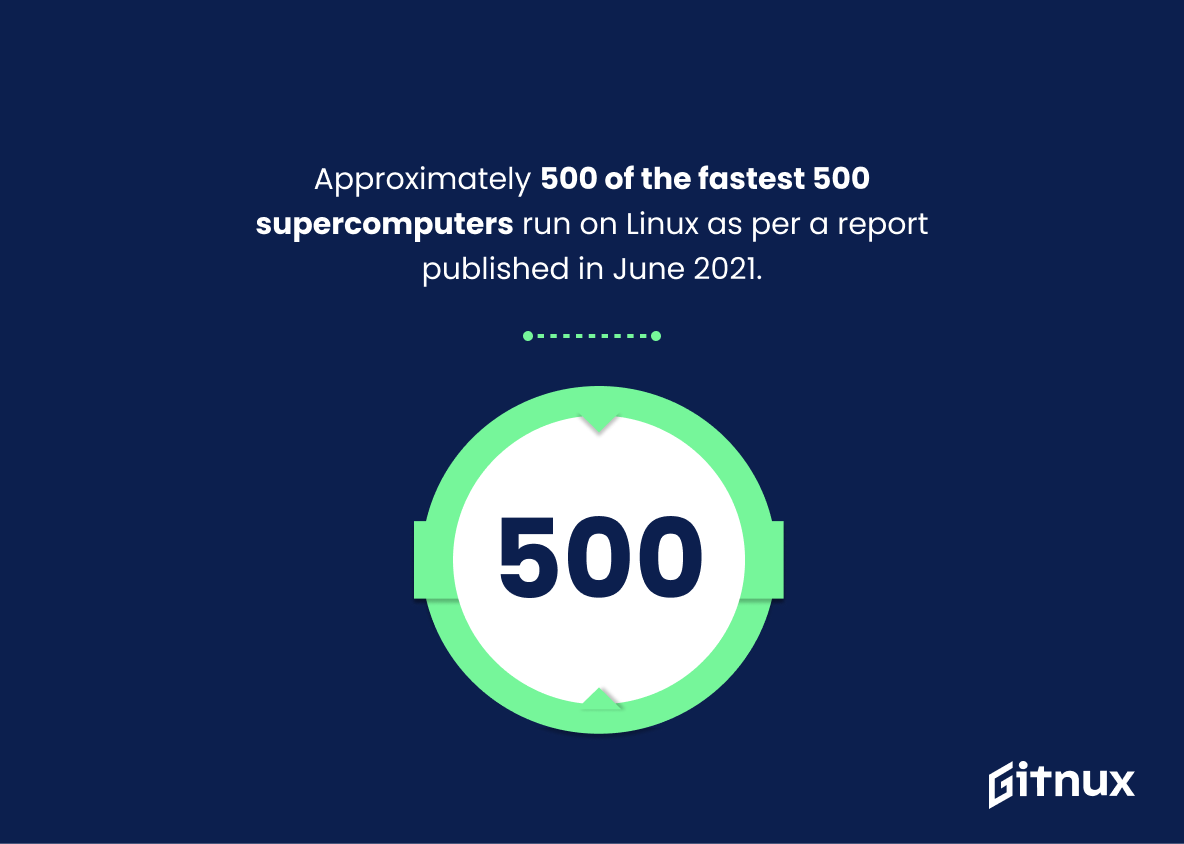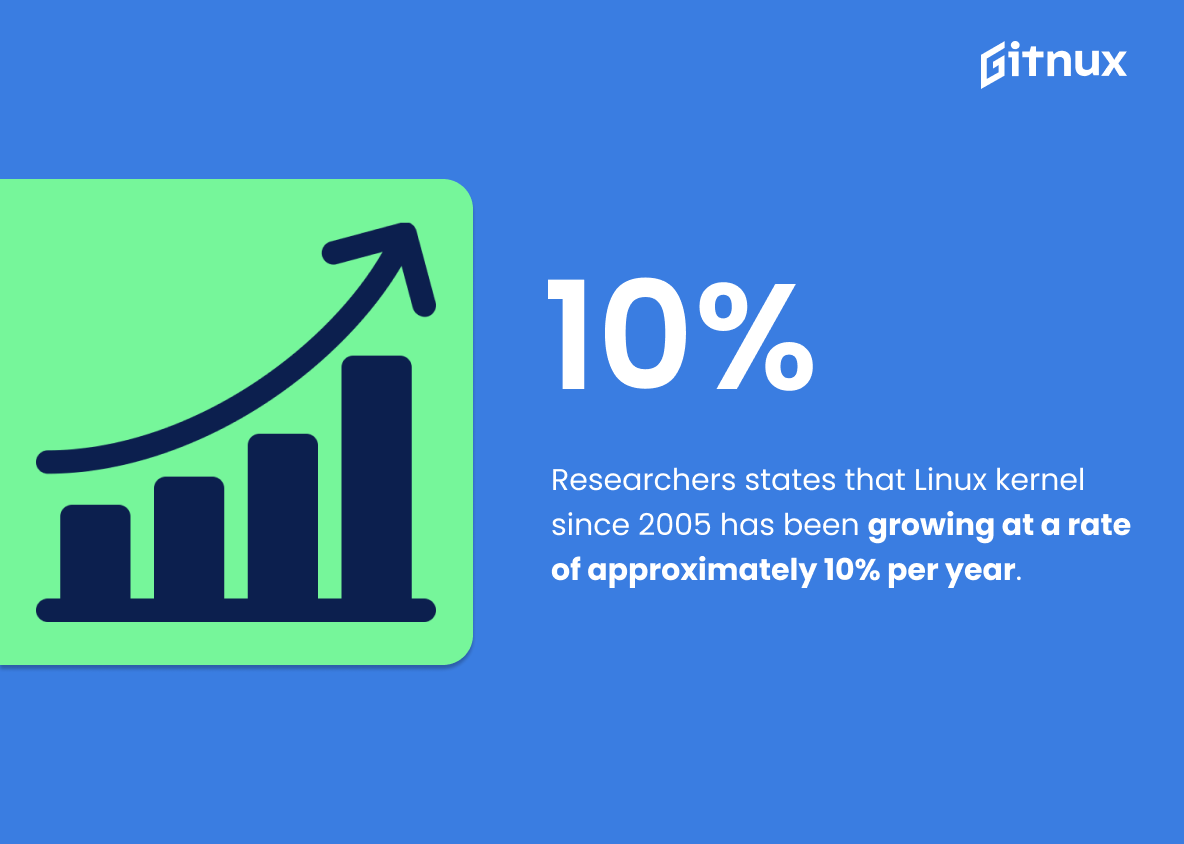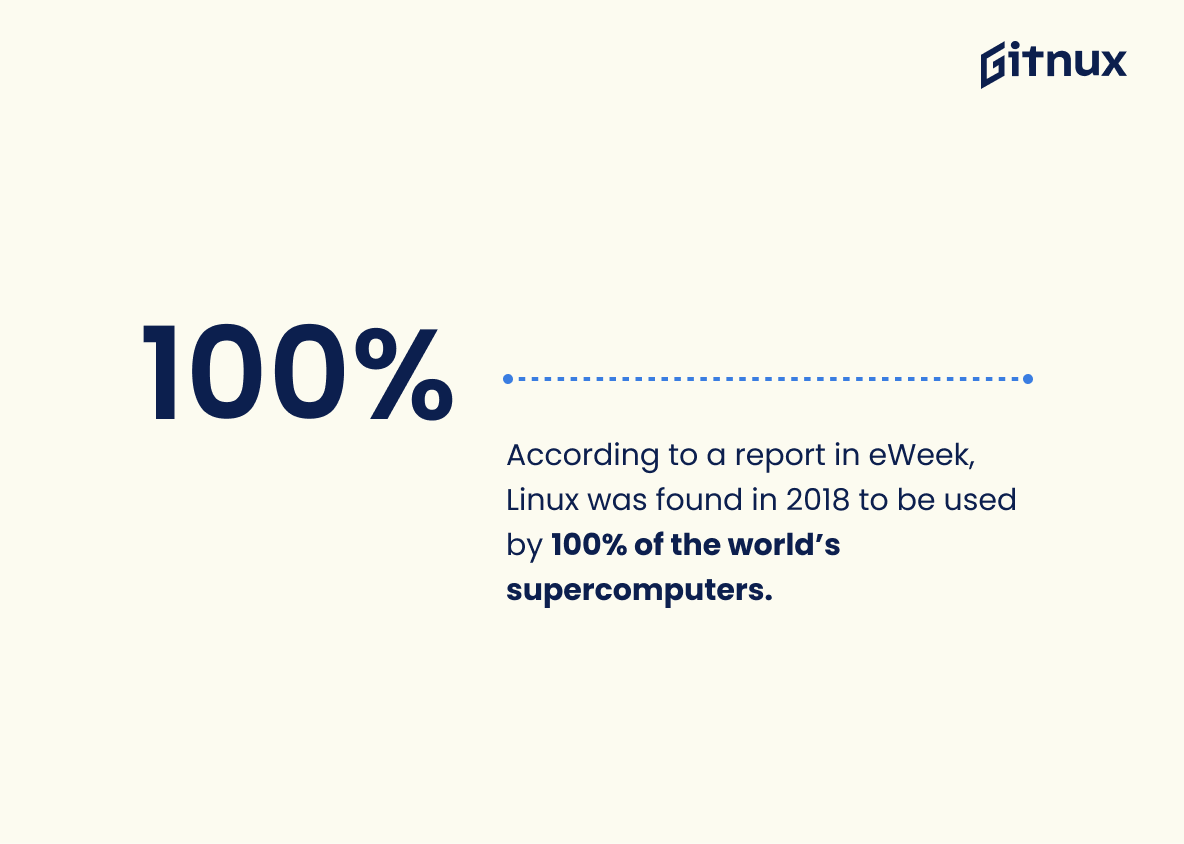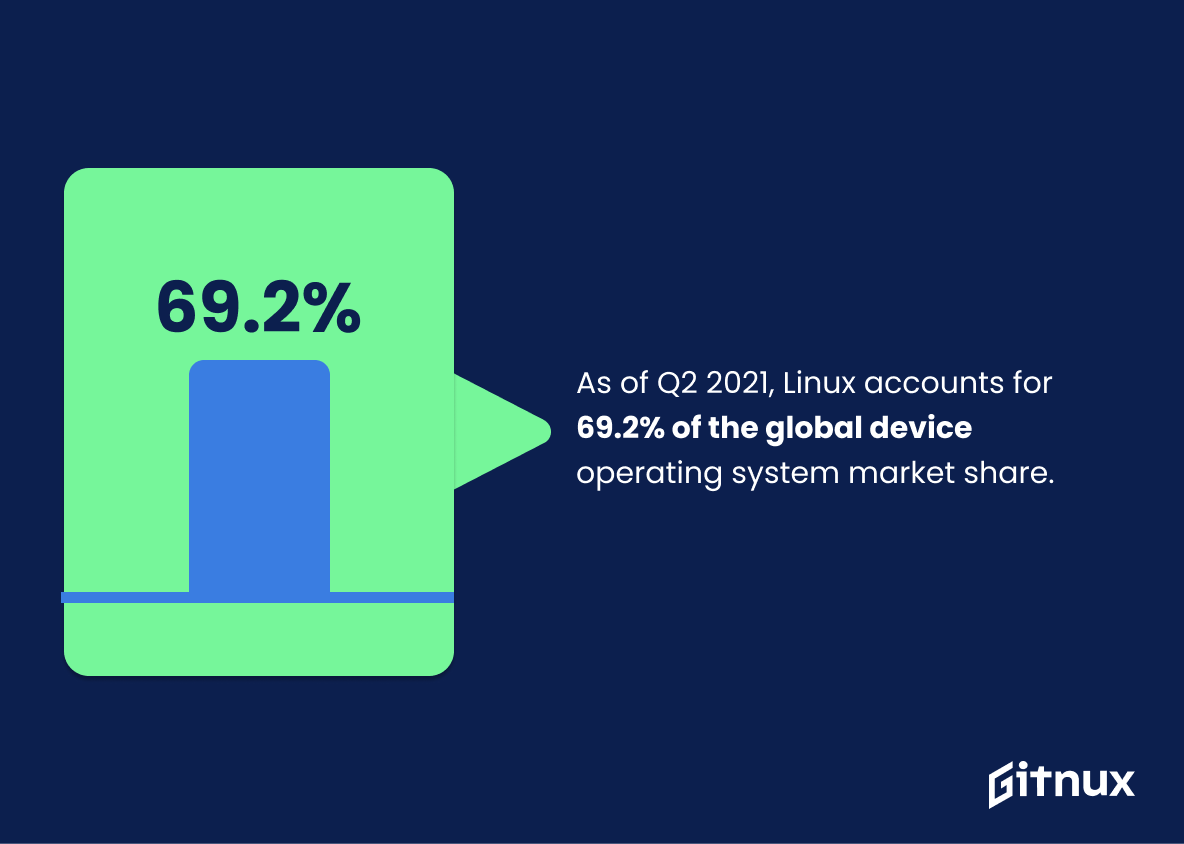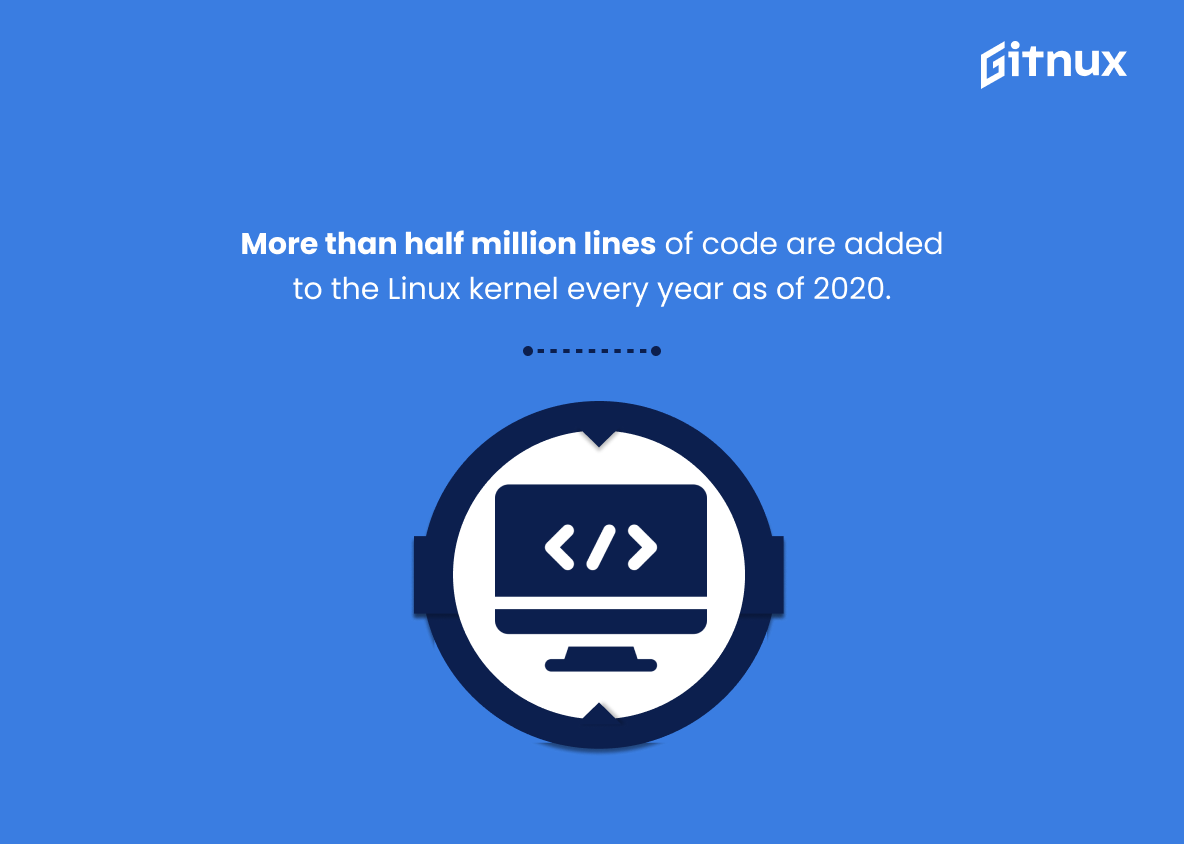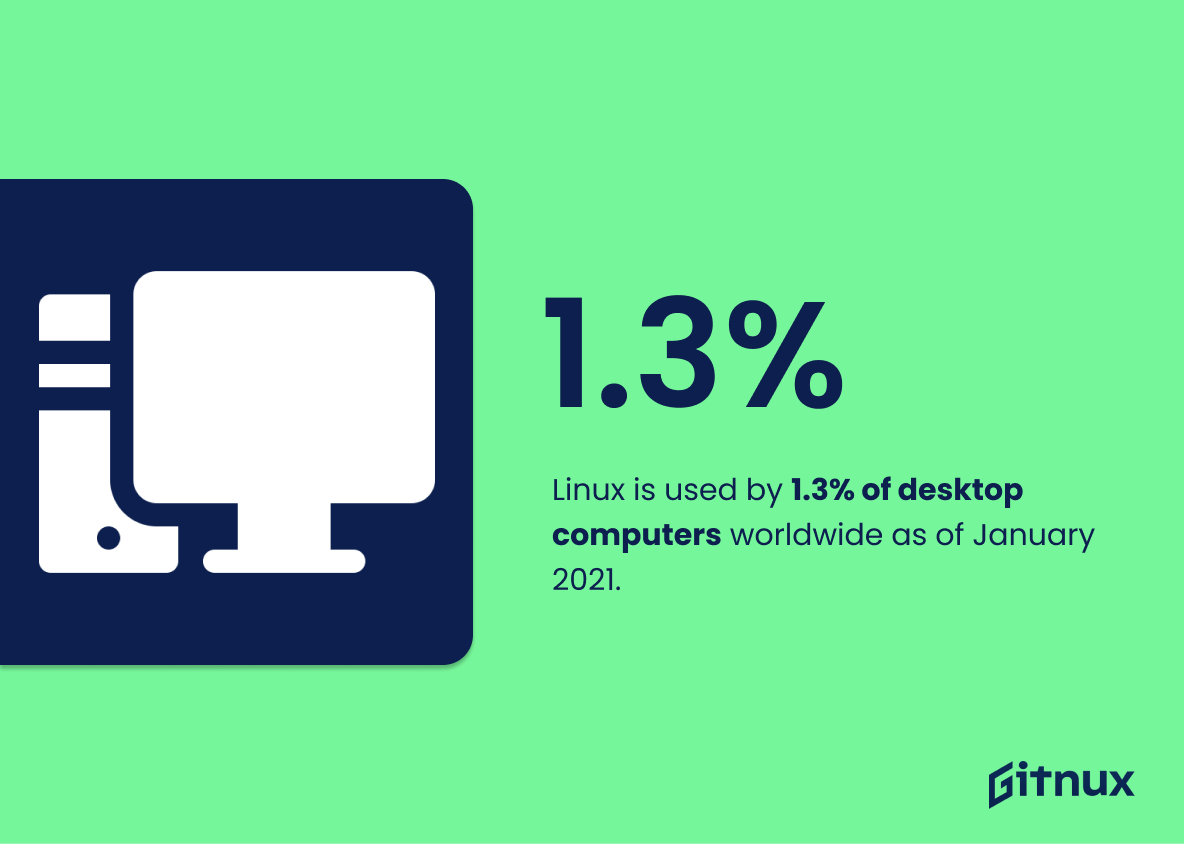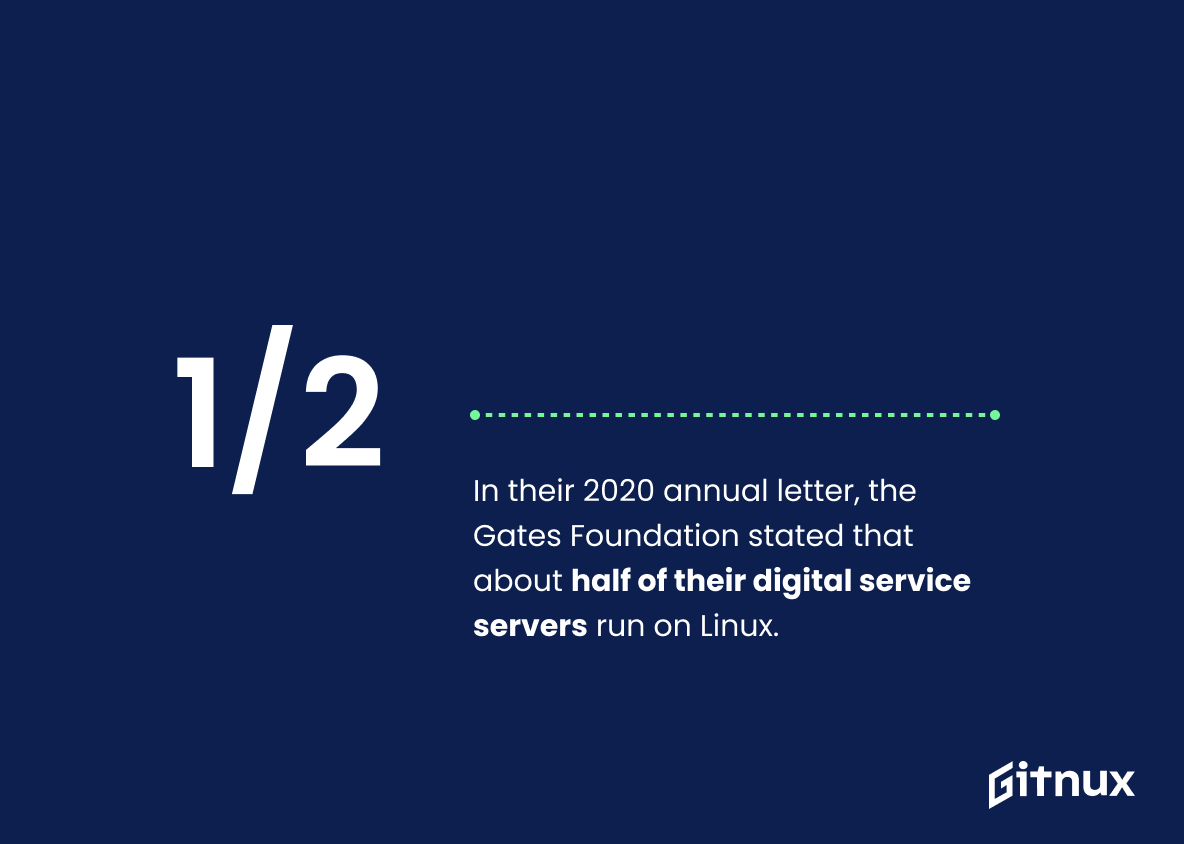Unveiling an unseen world before your eyes, we invite you to delve into the fascinating realm of Linux – an open-source operating system that is powering industries across the globe. In today’s digital age, Linux continues to be the backbone of critical infrastructures, underpinning everything from high-speed trains to nuclear submarines.
This blog post will illuminate the less-explored territories of Linux, shedding light on its profound influence and the year-on-year expansion across various sectors. Join us as we journey through the most intriguing, current Linux statistics, and analyze how this groundbreaking technology is reshaping our digital landscape. So, whether you’re a diehard Linux devotee or a curious tech-enthusiast, we guarantee you’ll find some compelling insights within.
The Latest Linux Statistics Unveiled
As of June 2021, 92.4% of the world’s top 1 million servers run on Linux.
In the panorama of Linux statistics, the dazzling figure of 92.4% coverage of the world’s top 1 million servers as of June 2021, is a testament to Linux’s dominating presence in the server market. This number is not merely a display of mere domination, but rather it paints a vibrant picture of the trust and confidence industry giants have bestowed upon Linux.
Conveying the OS’s reliability, flexibility, and superior security features, this statistic serves as an eloquent argument advocating Linux’s prowess in the discourse of server-side applications. Moreover, this trendsetting figure also offers a testament to Linux’s future growth trajectories and areas of opportunity, making it an integral piece of any discussion on Linux’s marketplace position.
In 2021, over 80% of smartphones worldwide run on Linux-based operating systems, mainly due to Android.
Showcasing the power and extent of Linux deployment, the figure emphasizes just how dominant Linux has become in a crucial segment of today’s digital technology, particularly smartphones. Bearing witness to the ubiquity of Linux, this statistic underscores that more than 80% of smartphones globally operate on Linux-based systems such as Android in 2021.
When interpreting this percentage, it translates into Linux not just being a niche player, but a titan in the field of technology, displaying its robust performance, diversity and adaptability. This clearly demonstrates Linux’s significant role and the sheer scale of its presence in our everyday lives, making it a focal point in the discourse around current tech trends in the blog post.
More than 96.3% of the world’s top 1 million websites are powered by Unix-like operating systems, with Linux being the most popular.
Immerse yourself into the digital landscape for a moment and imagine over 960,000 out of the world’s top 1 million websites thriving on the robust, efficient, and secure foundation of Unix-like operating systems. Now, bring into the spotlight the superstar of this cybernetic force – Linux, which emerges as the most beloved choice among these systems.
When we paint a picture of the internet in numbers, this towering statistic takes center stage, revealing the dominance and popularity of Linux. It accentuates the colossal show of trust instilled in Linux by the pioneers of the web world, who bank on its incredible flexibility, stability, and high-level performance.
Thus, diving deep into the Linux statistics in our blog post, this number not only narrates the tale of Linux’s success but also paves the way for understanding its indispensable contribution to powering the digital world. It accordingly shapes our conversation, hooking the reader’s attention to explore more about why Linux is such a leading choice, as we unwrap the layers of statistical insight.
As per NetMarketShare, Linux holds a desktop OS market share of 1.24% as of June 2021 at the global level.
Highlighting the global desktop OS market share of Linux, as quoted by NetMarketShare, paints a significant picture of Linux’s position in the world of operating systems. With a 1.24% share as of June 2021, it offers an interesting perspective on the competitive landscape.
This figure assists in comprehending Linux’s role in the unified OS ecosystem and where it stands against giants like Windows and Mac-OS. Moreover, it enables the user community, developers, and stakeholders to evaluate Linux’s penetration, adoption rate, and its acceptance by the users globally. Thus, in the elaborate narrative of Linux statistics, this piece of information plays a pivotal role.
Approximately 500 of the fastest 500 supercomputers run on Linux as per a report published in June 2021.
Elevating the preeminence of Linux in the landscape of high-performance computing, an eye-opening fact states that around 500 of the fastest 500 supercomputers leverage Linux, underscored in a report published in June 2021. This compelling manifestation of Linux’s dominance serves to demystify the magnitude of Linux’s influence in the computer universe, bolstering its status as the operating system of choice for power-intense environments.
Accordingly, this statistic embodies a pivotal perspective that enriches our understanding of Linux’s esteemed position in a blog post about Linux Statistics, offering an enlightening lens through which to appreciate its significant contribution.
Researchers states that Linux kernel since 2005 has been growing at a rate of approximately 10% per year.
Highlighting the remarkable growth rate of the Linux kernel since 2005 offers a robust insight into the evolving dynamics of this open-source operating system. The 10% annual growth statistic punctuates not only the scaling technological advancements in this arena, but also the solidifying faith of a global pool of developers in Linux. This understanding, paired with the context of Linux powers its credibility, ignites the interest of the readers in the blog post about Linux Statistics, and fuels a deeper exploration into its ever-expanding universe.
In 2020, Stack Overflow surveyed and found that over 55% of professional developers use Linux as their primary operating system.
Highlighting such a statistic in a post about Linux Statistics serves as a powerful testament to Linux’s widespread adoption and popularity amongst the professional developer community. With over half, specifically 55%, embracing Linux as their primary operating system in 2020, as per the Stack Overflow survey, it indicates Linux’s significance and legitimacy in the development world. It speaks volumes about the platform’s robustness, open-source nature, flexibility, and its power to serve diverse user needs, thus strongly reflecting its dominant standing in the technology industry.
According to a report in eWeek, Linux was found in 2018 to be used by 100% of the world’s supercomputers.
Profoundly underlining the dominance of Linux in the realm of high-performing machines, eWeek reported that every supercomputer in the world relied on this operating system in 2018. This nugget of information acts as a testament to Linux’s robustness, efficiency, and unmatched power in dealing with heavily computational tasks that hover far beyond the realm of personal computing.
This fact alone paints a daunting portrait of Linux as the uncontested champion in the demanding arena of supercomputing. In a broader discourse on Linux Statistics, this fact emerges as a linchpin, revealing the advanced capability machinery’s de-facto choice, providing a striking demonstration of Linux’s global acceptance and reliability.
As of Q2 2021, Linux accounts for 69.2% of the global device operating system market share.
Highlighting this notable statistic of Linux holding 69.2% of the global device operating system market share as of Q2 2021 provides a powerful testament to Linux’s dominance and prevalence in the technological world. It emphasizes its significant influence and acceptance across the globe, attesting to its robustness, flexibility, and reliability.
This figure underscores the key role of Linux in the panorama of operating systems, reinforcing the blog post’s topical relevancy and demonstrating the sheer scale of Linux usage — making the audience fully grasp the Linux world’s impact.
More than half million lines of code are added to the Linux kernel every year as of 2020.
This dynamic digit, illustrating over half a million lines of code being added to the Linux kernel annually as of 2020, serves as a testament to the significant and continuous efforts dedicated to the evolution and enhancement of this open-source operating system. Reflecting the robust vibrancy of the Linux community, it underscores how contributions pour in from worldwide programmers and developers, all fine-tuning the Linux kernel to serve a wide spectrum of user requirements.
This perpetual metamorphosis makes Linux unique and flexible, solidifying its foothold in a diverse array of applications, from servers and supercomputers to Android phones and home appliances, each year more capable, efficient and secure than the last.
Linux is used by 1.3% of desktop computers worldwide as of January 2021.
Delving into the seemingly modest digit of 1.3% paints a rather intriguing picture for our exploration into Linux statistics. When we appreciate this modest figure in its true light, it signifies the footprint that Linux has managed to establish in the global desktop market against formidable competition as of January 2021. It further uncovers Linux’s resilience and its persistent presence in an ever-competitive and evolving ecosystem.
Drawing into sharp focus to this percentage enables us to understand the wide sprawling canvas of operating systems and the undisputed niche Linux has carved out for itself. This recognition is crucial as we delve deeper into specific Linux statistics, making our discussion richer and more comprehensive.
As of 2020, approximately 78% of businesses worldwide reported that they are using some form of open source software, most notably Linux.
“While exploring the fascinating world of Linux, one can’t overlook the major revelation that, as of 2020, a staggering 78% of businesses globally have embraced the use of open source software; Linux being the hero among them. This paints a vivid picture of Linux’s robust foothold in the tech ecosystem.
Imagine Linux as a thriving metropolis; businesses, akin to citizens, have substantially established their workspaces here, making it a vibrant scene of ongoing activity. Served on the exquisite silver platter of open source software, Linux paves the way forward for these businesses, a testament to the revolutionary power and immense popularity of Linux in the contemporary digital world.”
Gates Foundation revealed in their annual letter 2020 that ~50% of the servers delivering digital services of Bill and Melinda Gates Foundation run on Linux.
In the realm of Linux statistics, the Gates Foundation’s 2020 annual letter shines a spotlight on an illuminating fact. Far from an obscure system relegated to the peripherals, Linux underscores its impressive standing in the technological sphere by powering approximately 50% of the Gates Foundation’s servers that deliver digital services.
This affirms the tool’s dominance and resilience, and underpins its widespread usage by heavyweight organisations, which reinforces Linux’s concrete and substantial role in the technological infrastructure to this day. This piece of statistic, consequently, paints an undeniable portrait of Linux’s ongoing ubiquity and pertinence in digital service provision, supplementing its narrative with compelling, real-world evidence.
Conclusion
In the expanding universe of technology, Linux has secured its position as a powerful and versatile operating system. Its robust security, high customization features, low cost, and strong community support make it an ideal choice for both individual users and organizations around the world.
The numerous statistics we have discussed underline the increasing trajectory and the wide acceptance of Linux in various sectors. It’s apparent that Linux will continue to stand tall against its counterparts and advance exponentially in the years to come. Keep an eye on this space to stay updated with more intriguing facts and figures about Linux.
References
0. – https://www.www.linuxfoundation.org
1. – https://www.w3techs.com
2. – https://www.www.netmarketshare.com
3. – https://www.www.zdnet.com
4. – https://www.www.eweek.com
5. – https://www.www.gatesnotes.com
6. – https://www.gs.statcounter.com
7. – https://www.www.top500.org
8. – https://www.insights.stackoverflow.com
